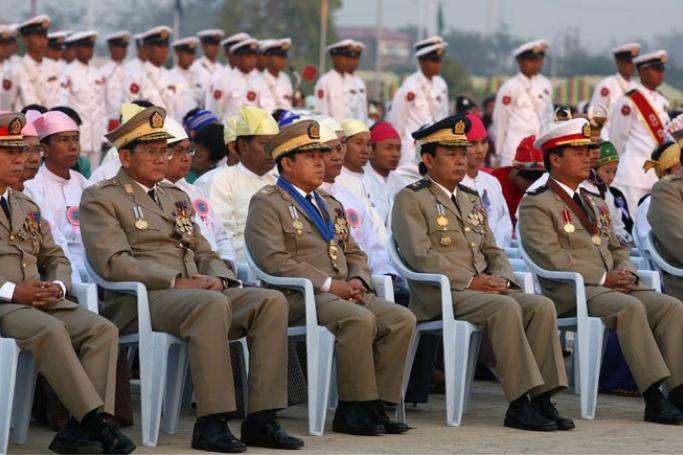At the Defence Services Museum in Nay Pyi Taw there are cabinets devoted to the peace-making exploits of President U Thein Sein. When he wore an army uniform, especially during his time as chief of the Shan State’s Triangle Command, he was responsible for negotiations with ethnic minority armies.
This is an experience he shares with other senior officers of his generation. They achieved high rank when ceasefire agreements with ethnic armies and militias were the defining feature of Myanmar’s political andscape. Deals with rebel groups – large and small – helped put the peace into the mandate of the State Peace and Development Council.
We shouldn’t forget that these agreements were a long way from final peace deals. They remained vulnerable to changing local conditions, the whims of new commanders and orders from on high. The most effective were welded together by a peculiar mix of booze-soaked friendship, mutually assured attrition and commercial self-interest.
While some decision-makers still harboured ambitions of striking a longterm, nation-wide and comprehensive peace, most knuckled down with the immediate tasks of enrichment and re-positioning. U Thein Sein experienced these trends during his years in Shan State.
While such arrangements were far from elegant and some battles continued in the hills, most corners of Myanmar were relatively calm. Areas with heavy fighting – such as southern Shan State and large parts of Kayin and Kayah states – were far from the experience of most Myanmar citizens.
Through those years, the government mouthpieces would occasionally herald the surrender of new splinter groups and small militias. From the vantage of tatmadaw strategists, it seemed that the hard realities of post-ceasefire fragmentation and personal greed would eventually bring an end to ethnic conflict.
After the 2010 election, the new political system naturally gave extra impetus to peace-making work. Money flowed in from all directions and especially from Europe and Japan, to help foster a climate of conciliation and compromise. New institutions, such as the Myanmar Peace Center, were created to shoulder the load.
The basic message was that the wars should end. That message was badly bruised by the resumption of fighting with the Kachin Independence Army in mid-2011.
This year it has taken a further blow with the escalation of fighting in northern Shan State. Scores of tatmadaw troops have died in one of the many messy, unresolved conflicts that continue to fester.
This sends a blunt message to ethnic leaders who are unsure of their status leading up to the 2015 election. The optimists among them had long anticipated that the President and his strategists would come up with an answer to the ethnic questions. They still talk of federalism, self-government, local education and cultural independence.
But it is the ethnic pragmatists who now have the upper hand in these discussions. Having long warned of the duplicity of central government negotiating tactics they are vindicated by U Thein Sein’s failure to secure a national deal. Recent fighting at Laukkai only reinforces their sense of betrayal.
So they are waiting to see who may replace him after the 2015 election. Negotiating with a new president has plenty of appeal, especially for those anxious to ensure that the final peace will serve their long-term interests.
With trust in short supply, it would take an audacious set of moves to ram through a comprehensive peace agreement this year. The President may have missed his chance to secure this part of his legacy. Yet it is not through lack of creative effort that a resolution has proved elusive. Ethnic leaders are still buying time in the hope that a better deal will gallop into view. Such hope has fathered a hundred ceasefire pacts and a thousand broken deals.
(Dr Nicholas Farrelly is a partner at Glenloch Advisory and a Fellow in the Bell School of Asia Pacific Affairs at the Australian National University).
This Article first appeared in the March 12, 2015 edition of Mizzima Weekly.
Mizzima Weekly is available in print in Yangon through Innwa Bookstore and through online subscription at www.mzineplus.com
You are viewing the old site.
Please update your bookmark to https://eng.mizzima.com.
Mizzima Weekly Magazine Issue...
14 December 2023
New UK Burma sanctions welcome...
13 December 2023
Spring Revolution Daily News f...
13 December 2023
Spring Revolution Daily News f...
12 December 2023
Spring Revolution Daily News f...
11 December 2023
Spring Revolution Daily News f...
08 December 2023
Spring Revolution Daily News f...
07 December 2023
Diaspora journalists increasin...
07 December 2023
Tatmadaw and Arakan Army are in talks












